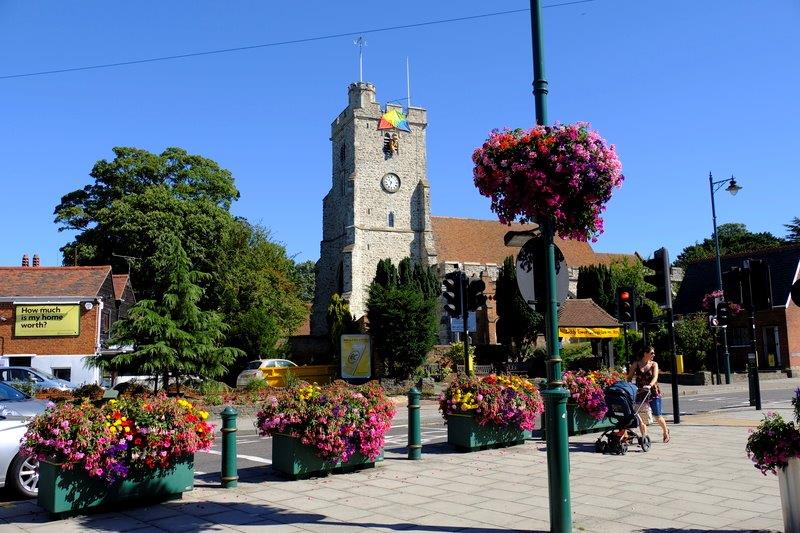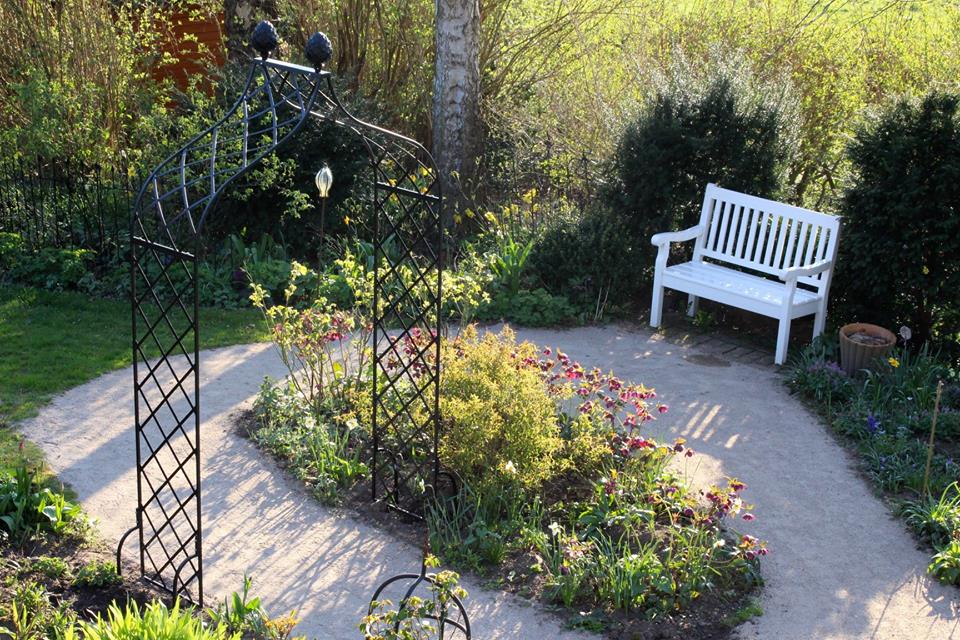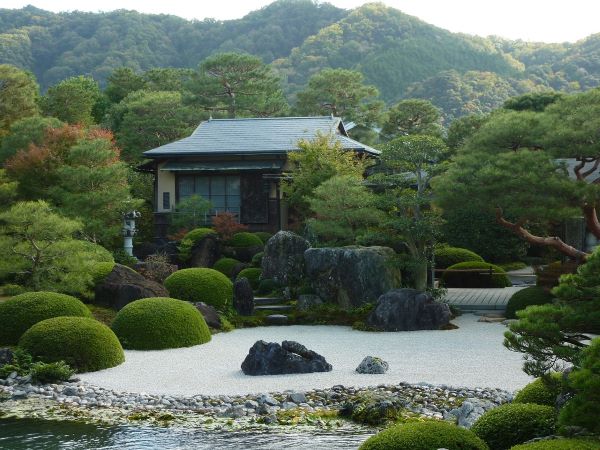In recent years, city beautification has evolved to encompass "green" infrastructure to reduce stormwater run-off, improve air quality, and lessen heat island effects, incorporating elements such as rain gardens, bio-swales, planter boxes, green roofs, permeable paving and tree plantings.
Key features of the City Beautiful movement include:
1. Beautification of Cities: The movement emphasized the importance of creating visually appealing urban environments. This involved the construction of grand boulevards, parks, and civic buildings that showcased architectural beauty and design.
2. Civic Pride: City Beautiful advocates believed that beautiful cities would instill a sense of civic pride and encourage citizens to engage in community life. They thought that by creating aesthetically pleasing public spaces, people would develop a stronger connection to their city.
3. Urban Planning: The movement promoted comprehensive urban planning to address the chaotic and often unplanned growth of cities. This included zoning regulations, street layouts, and the creation of open spaces for recreational purposes.
4. Monumental Architecture: City Beautiful proponents favored monumental architecture that reflected classical and neoclassical styles. Grand public buildings, statues, and monuments were seen as symbols of civic virtue and cultural progress.
5. Green Spaces: The movement emphasized the importance of incorporating green spaces, parks, and gardens into the urban landscape. Frederick Law Olmsted, a prominent landscape architect, played a significant role in promoting the integration of nature into city planning.
6. Order and Harmony: City Beautiful advocates believed that well-designed cities would promote order and harmony, both aesthetically and socially. They sought to counter the perceived chaos and disorganization of rapidly growing industrial cities.
Below: Colorful display of planters enlivens a small city park; Above: Lamppost Hayrack adds charm to a suburban street
Considerations when developing a Beautification Project
1. Community Involvement:
- Involve the local community in the decision-making process. Seek input, feedback, and ideas from residents, businesses, and other stakeholders.
- Conduct public meetings, surveys, or workshops to gather opinions and preferences.
2. Sustainability:
- Incorporate sustainable and environmentally friendly practices in beautification efforts. Use native plants, eco-friendly materials, and energy-efficient lighting.
- Consider long-term maintenance and ensure that the chosen elements are durable and require minimal upkeep.
3. Preservation of Cultural Heritage:
- Preserve and highlight cultural and historical landmarks. Incorporate elements that celebrate the city's identity and heritage.
- Collaborate with local artists and craftsmen to integrate cultural expressions into the urban landscape.
4. Maintenance Plan:
- Develop a comprehensive maintenance plan to ensure that the beautified areas remain well-kept and attractive over time.
- Involve the community in ongoing maintenance efforts to create a sense of ownership.
5. Accessibility:
- Ensure that beautification projects enhance accessibility for all residents, including those with disabilities.
- Plan for pedestrian-friendly spaces, accessible pathways, and public transportation options.
6. Artistic Expression:
- Encourage public art installations and murals to add vibrancy and creativity to the cityscape.
- Support local artists and cultural initiatives to showcase a diverse range of artistic expressions.
Pitfalls when planning and implementing Beautification Projects
1. Neglecting Maintenance:
- Don't neglect long-term maintenance considerations. Failing to plan for upkeep can result in the deterioration of beautified areas.
2. Ignoring Local Input:
- Don't disregard the opinions and preferences of the local community. Failing to involve residents may lead to dissatisfaction with the final outcomes.
3. Overlooking the Environmental Impact:
- Don't undertake projects that harm the environment or deplete natural resources. Consider the ecological impact of landscaping and construction materials.
4. Excessive Commercialization:
- Don't over-commercialize public spaces to the detriment of the overall aesthetic and cultural value. Maintain a balance between commercial and public interests.
5. Disregarding Cultural Heritage:
- Don't disregard or overshadow existing cultural and historical landmarks. Instead, integrate beautification efforts to complement and enhance these elements.
6. Lack of Diversity:
- Don't focus on a singular aesthetic or theme without considering the diverse preferences and needs of the community. Strive for inclusivity in design choices.
An often overlooked solution to downtown revitalization
Trees can significantly enhance the quality of downtown areas and contribute to creating a more vibrant and livable urban environment. Trees add natural beauty to the urban landscape, softening the harsh lines of buildings and pavement. The presence of greenery creates a visually pleasing and inviting atmosphere and plays a crucial role in purifying the air by absorbing pollutants such as carbon dioxide, sulfur dioxide, and nitrogen dioxide. They release oxygen during photosynthesis, contributing to cleaner and fresher air in downtown areas.
Urban areas often experience the heat island effect due to the concentration of buildings and pavement. Trees provide shade and help regulate temperatures by reducing heat absorption and providing cooling through the process of transpiration. The foliage of trees can act as a natural sound barrier, helping to absorb and deflect noise from traffic and other urban activities. This contributes to a quieter and more peaceful downtown environment.
Well-placed trees can create shaded areas for people to gather, relax, and socialize. Urban parks and green spaces with trees provide residents and visitors with opportunities for recreation and community engagement. Trees create habitats for birds, insects, and other small wildlife. The presence of urban greenery supports biodiversity, fostering a more ecologically balanced and sustainable downtown ecosystem.
Access to nature has been linked to improved mental health and well-being. Trees in downtown areas offer residents and workers a chance to connect with nature, reducing stress and enhancing overall quality of life. Trees help manage stormwater runoff by absorbing rainwater and reducing the risk of flooding. Their root systems also contribute to stabilizing soil and preventing erosion.
A tree-lined streetscape can make walking more pleasant and comfortable. This contributes to a more pedestrian-friendly downtown, encouraging people to explore the area on foot. Streets lined with trees have been associated with increased property values. The aesthetic and environmental benefits of trees can make an area more desirable, attracting businesses, residents, and investors.
How We Can Help
Commercial Hanging Baskets:
- Garden Artisans Bellus Baskets: 14", 17", and 22" diameters that are deeper than traditional hanging baskets, so require less frequent watering.
- Garden Artisans Commercial Hanging Basket: 22" diameter traditional basket
- Garden Artisan Hanging Basket Coco Liners: Minimum 10mm thickness; molded with latex. Various sizes, from 12" to 24" diameter: GLM Round, GLB Round Flat-Bottom, GLBH Commercial 22"
- Replacement Chains for hanging baskets
- Amberol Self-Watering 18" Hanging Basket: Sturdy black polyethylene with 1.6 gallon water reservoir and heavy duty hanging chain
- All Amberol Self-Watering Basket Options: Cup & Saucer Hanging or Pole Mounted , Up-the-Pole Lamppost Baskets, 18" Hanging Basket
Commercial Brackets:
- SPB18: Decorative black sturdy steel bracket uses your own banding hardware and hangs one basket. 2 may be installed on either side of pole to hang 2 baskets per pole.
- LPB40: Sturdy steel, black, fits 5-7 inch diameter poles. LPB40S is a single style that holds one basket per pole. LPB40D is a double style that hangs 2 baskets per pole.
- KC82: Gas Lamp Style Double Bracket, fits 3-4 inch poles and hangs 2 baskets per pole.
Commercial Lamppost Hayracks:
- LPH25: 25" diameter basket fits around 5-7 inch poles, one 1/2 basket on each side. Black poly-coated steel.
- GLPH25: Molded coco liner for LPH25 lamppost basket consists of one pair of 1/2 basket liners. Minimum 10mm thickness; molded with latex.
- LPH18: 18" diameter basket fits around 2-3 inch poles, one 1/2 basket on each side. Black poly-coated steel. We have found these work well for smaller towns with narrower lampposts (but please always measure).
- GLPH18: Molded coco liner for LPH18 lamppost basket consists of one pair of 1/2 basket liners. Minimum 10mm thickness; molded with latex.
Large Planters - Tree Planters:
- Casse de Versaille Galvanized Steel Planters: 21", 26", 34", 41", 51", or 59" square planter with removable stainless steel liner
- Cast Stone Planters 25" and larger
- Aluminum and Steel Planters 25" and larger
- Fiberglass Planters 25" and larger
- Resin and Plastic Planters 25" and larger









